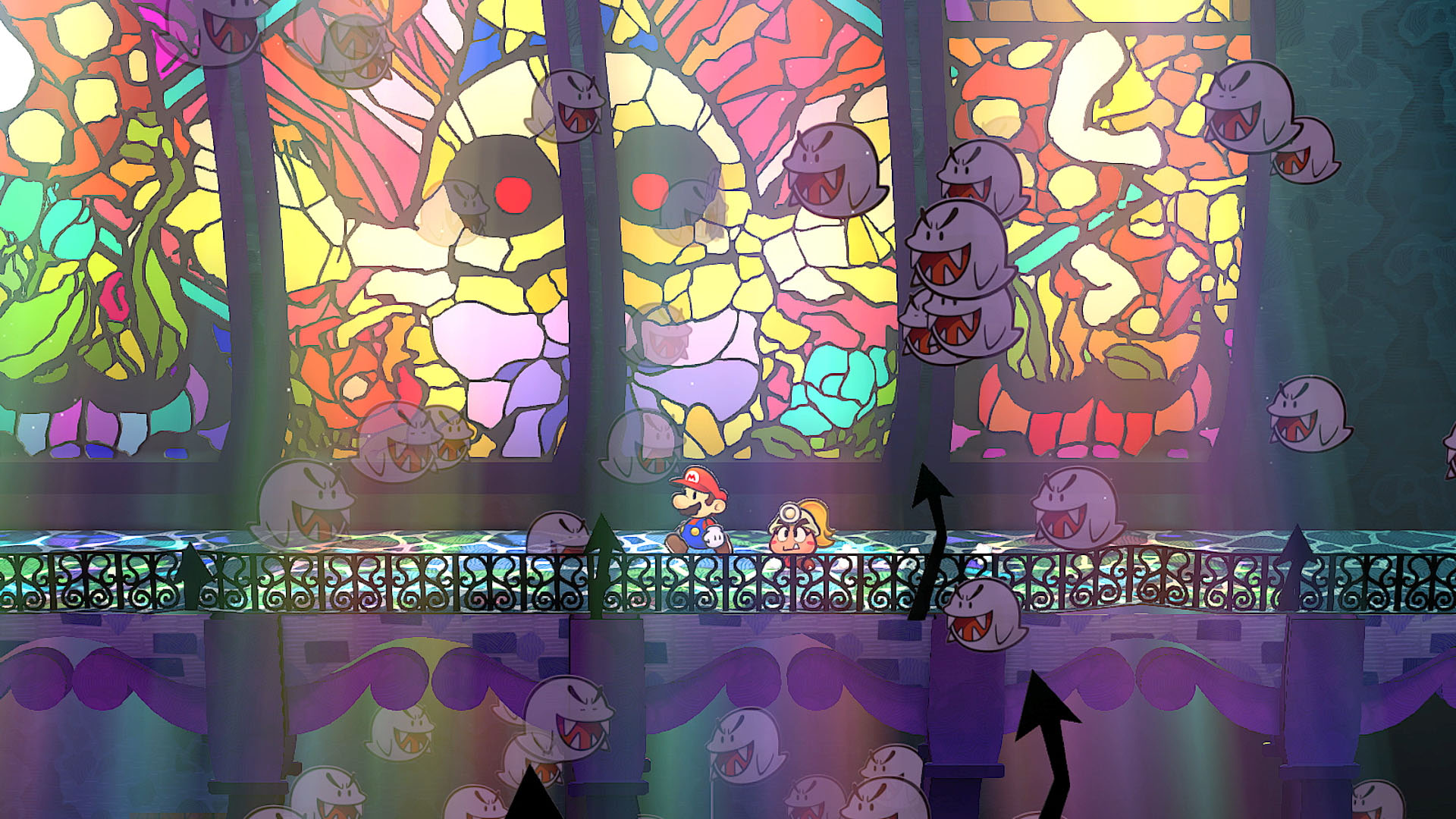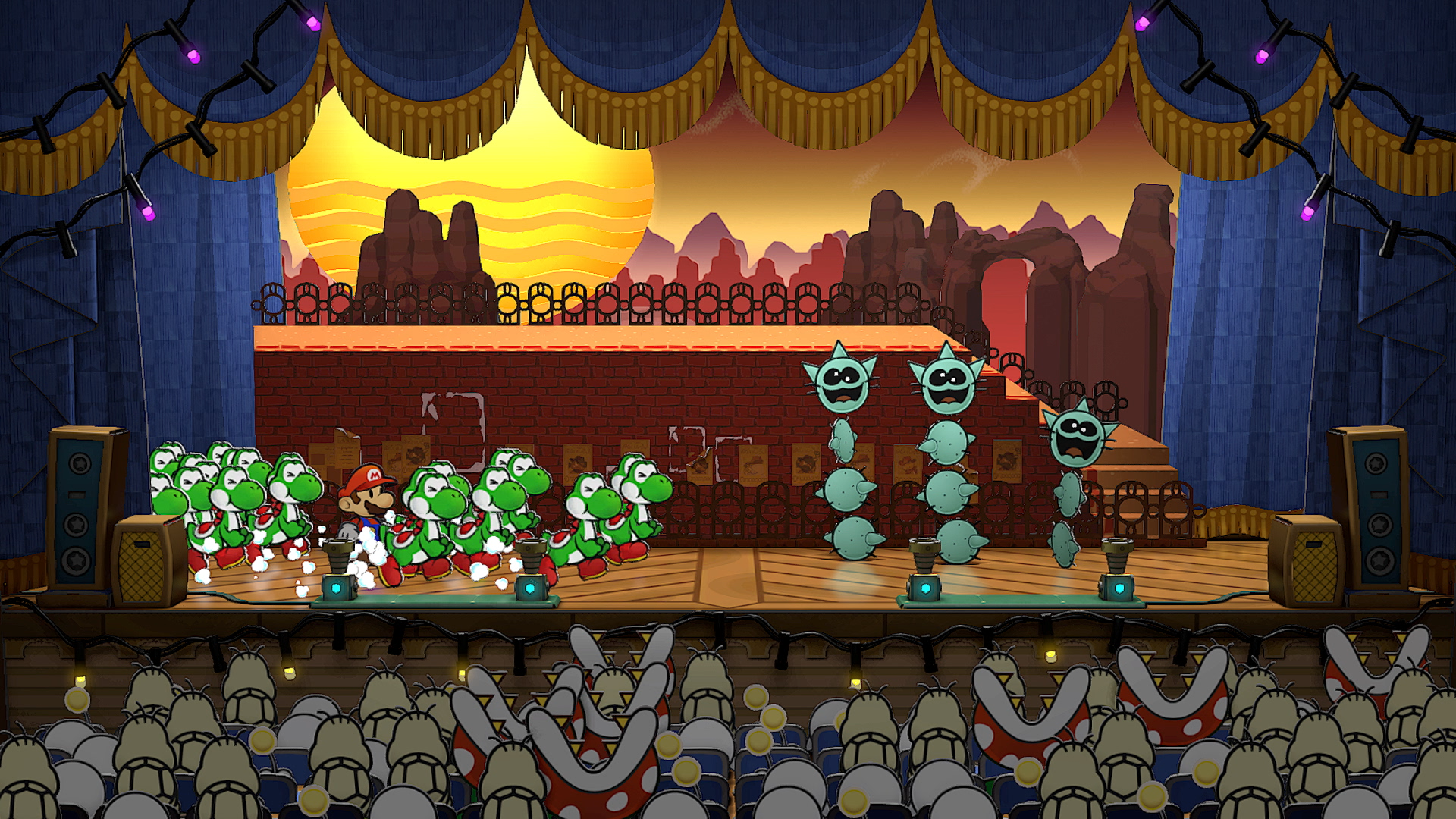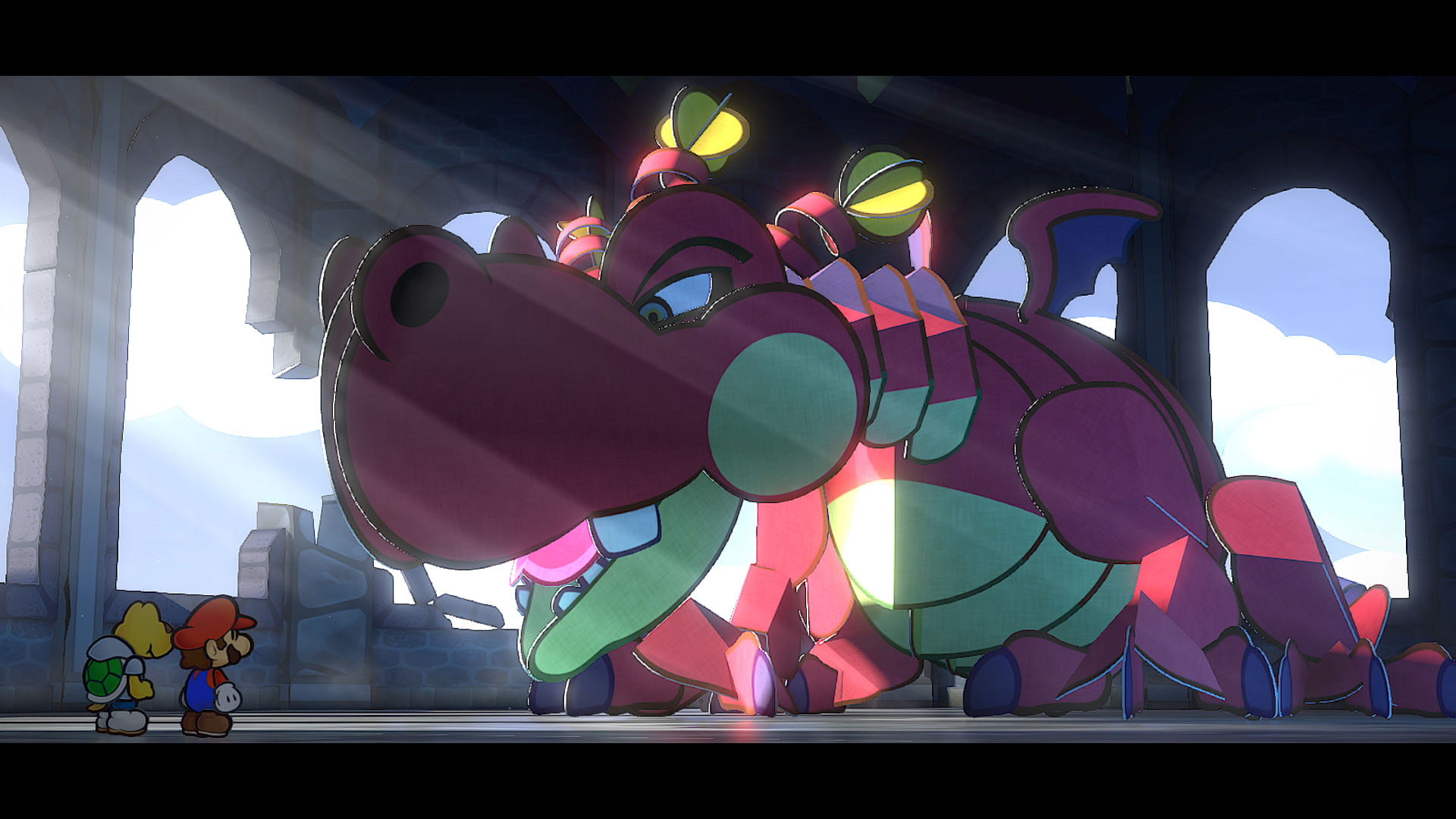
When I reviewed the Super Mario RPG remaster last year, I called it my favourite Mario to date. The game’s humourous personality and clever riff on RPG tropes quickly won me over, and I finally understood why it was revered for so many years.
Now, I have a similar feeling about Intelligent Systems’ Paper Mario: The Thousand-Year Door, the iconic plumber’s latest classic to get a Nintendo Switch remaster. The game’s whimsical story follows Mario as he seeks to find a mystic treasure and, along the way, save Princess Peach from the villainous X-Nauts. All told, The Thousand-Year Door has the same kind of approachable RPG mechanics and abundance of charm as Super Mario RPG while adding even more variety, creativity and depth.
First and foremost, the Paper Mario series — of which The Thousand-Year Door is the second entry — has an unmatched aesthetic. As the name suggests, Mario himself is rendered as a paper cutout, and that extends to everything in the world. Walls fold open when you enter houses to reveal what’s inside. Transitions between areas are marked by the screen literally getting crumpled up. When resting at an inn, Mario simply slips between the bed and the covers like a bank note going into an ATM.
All of this looked great on the GameCube, and so the remaster admittedly provides a more understated visual upgrade. Instead, the biggest changes come from some new quality-of-life improvements, like a hint system and menu shortcuts. The wonderful soundtrack, which consists of tons of catchy original tunes that have the occasional cute nods to classic Mario leitmotifs, has also gotten rearrangements.
But otherwise, this is the same game, and it’s all the better for it. Because even more so than Super Mario RPG, The Thousand-Year Door packs tons of colourful and likeable characters into every corner of its lovably papered world. From a flirtatious disco dog who hits on Mario’s sassy archaeologist companion Goombella, to a spiked fortress guard who gives you a trivia game show-inspired challenge, I was consistently eager to see who I’d meet next.
All the while, the core gameplay is all-around tighter and more layered than in Super Mario RPG. On a base level, The Thousand-Year Door features the same turn-based combat that rewards well-timed button inputs with more powerful party member attacks and reduced incoming damage. There’s also a ‘Flower Points’ (FP) system, this game’s version of MP, that’s shared between the party instead of individualized like in most RPGs. And, once again, each party member has snappy minigames they have to perform for their attacks, be it Mario’s hammer swing, Goombella’s jumping headbutt or the spinning shell slide from the timid Koopa Troopa, Koops.
But The Thousand-Year Door also introduces quite a few spins on that classic turn-based structure. Rather than having three-character parties, you only have two characters, and battles take place in a 2.5D plane instead of a fully 3D one. This results in a greater emphasis placed on turn sequences, as you can generally only hit the first enemy in a row. Therefore, you have to choose which of your two party members attacks first and which command to issue them. For instance, some Goombas have spiked helmets that will hurt Goombella if she uses her standard jump-based attack, meaning Mario’s hammer would be the better play. Conversely, Mario’s hammer can’t reach aerial enemies, so you’ll want him to attack the spiked foe so Goombella can safely pounce on his non-pointy buddy.
My favourite part of The Thousand-Year Door‘s combat, though, is its presentation. When you run into enemies in the overworld (in real-time, no random encounters), you’re transported to a stage, and battles play out like live theatre. Beyond adding even more to The Thousand-Year Door‘s winning jocular vibe, this also informs several exciting features that add some welcome dynamism to battles.
For one, attacks sometimes knock down stage elements like prop trees or a bucket from the rafters, which can land on both your party and enemies to make them dizzy and less accurate in their attacks. In some instances, even mid-command selection, hecklers will lob objects at you, requiring you to properly time a button input to humorously rush into the audience and stop them.
But the biggest role the stage format plays is in the super move ‘Special Move’ system. Successfully timed inputs will rouse the crowd, filling your super metre. This creates an engaging rhythm to battles, especially ones that go on longer, as it creates the feeling that the audience is actually responding to how you’re doing. Once the metre is filled, you can execute such Special Moves as Sweet Treat, a healing maneuver in which you have to time when to lob star bits to hit falling mushrooms and flowers to restore your health and FP. In this way, the Special Move feels rewarding and involved both from a gameplay and narrative perspective, with your battle exploits feeling like part of a grand in-universe performance.
The only problem with this delightful setup is that it sometimes makes what happens outside of battles feel comparatively listless. In particular, the prologue and first chapter of the game throw several scenes of lengthy stretches of expository dialogue, leading to a somewhat slow start. And even once you get past those relatively minor early jumps, The Thousand-Year Door frustratingly relies heavily on backtracking, which leads to further uneven pacing. There is at least an incentive to return to reach previously inaccessible areas through newly unlocked abilities like turning into a paper airplane, but I still wish you didn’t have to visit old locales quite so often.
These aren’t major issues, however, especially given The Thousand-Year Door‘s spellbinding aesthetic, entertaining characters and endearingly theatrical combat. Like an enchanting storybook that’s impossible to put down, I can’t recommend The Thousand-Year Door enough.
Paper Mario: The Thousand-Year Door will launch exclusively on Nintendo Switch on May 23rd.
Image credit: Nintendo
MobileSyrup may earn a commission from purchases made via our links, which helps fund the journalism we provide free on our website. These links do not influence our editorial content. Support us here.





